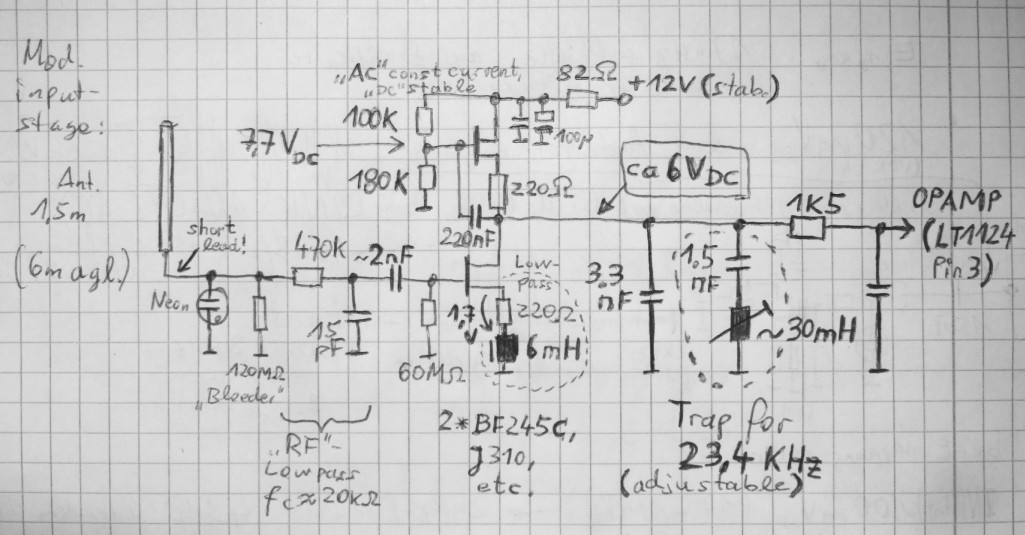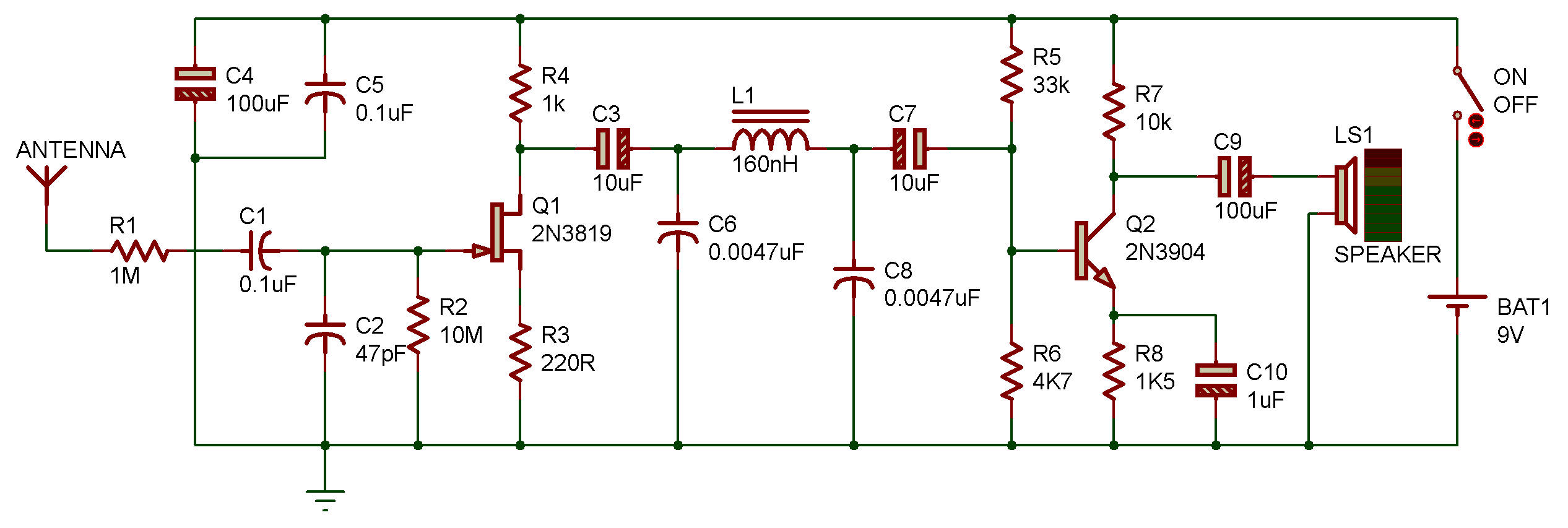
I drive out to a open ‘radio quiet’ rural area, turn on the switch and raise the antenna to the sky. Lightning produces a great variety of natural radio sounds – sferics, tweeks and whistlers – you can hear with a VLF radio receiver. You’ll need to be at least a quarter mile from any of those sources in order to hear the more subtle music of the planet. Turn one on in your house and you’ll immediately hear a loud, continuous buzz in the headphones. The receiver picks up lots of things besides aurora including a big ‘unnatural’ hum from alternating or AC current in power lines and home appliances. Earth’s magnetic field lines are shown in concentric purple ovals, pushed on by pressure from the Sun and elongated on the side facing sway from the Sun.

The magnetosphere acts as a shield to protect us from dangerous radiation in space. It’s created through the interaction of the solar wind (yellow lines) and Earth’s magnetic field. The magnetosphere of the Earth is enormous bubble of magnetism that surrounds our planet. Plug in a set of headphones and you’re ready to listen. The on-off switch also controls the volume. The components are housed in a small metal box with a whip antenna and powered by a 9-volt battery. I fire up a little unit called a WR-3 I purchased back in the mid-1990s. To bring them within range of human hearing we need a radio receiver. Radio waves given off by auroras and other forms of natural ‘Earth energy’ like lightning range from 19 to 1,800 miles long or longer. The pigments in our retinas convert these waves into visible images of the world around us. We’re used to waves of light which are very, very short, measuring in the millionths of an inch long. The battery-operated WR-3 VLF (Very Low Frequency) receiver with headphones for tuning into sounds “natural” radio broadcast by planet Earth. This handheld device converts very low frequency radio waves produced from the interaction of the solar electrons and protons with the Earth’s magnetic field into sounds you can listen to with a pair of headphones. If you’re like me and hard of auroral hearing, a small VLF (very low frequency) radio receiver will do the job nicely. Given that the aurora is never closer to the ground than 50 miles, the air is far too thin at this altitude to transmit any weak sound waves that might be produced down to your ears.

A spectacular display of moving lights overhead can trick your brain into serving up an appropriate soundtrack.

Imagination may be another reason some folks people hear auroras. Laboratory tests reveal that a surprising variety of substances, including frizzy hair and vegetable matter, can act as radio-to-audio VLF transducers.

Similar ‘fizzing’ sounds have been recorded by meteor watchers that may happen the same way. Wire-framed eyeglasses, grass and even hair can act as transducers to convert radio energy into low-frequency electric currents that can vibrate an object into producing sound. There is some evidence that electrophonic transduction can convert otherwise very low frequency (VLF) radio waves given off by the aurora into sound waves through nearby conductors. Credit: Bob Kingĭespite seeing hundreds of northern light displays ranging from mild to wild, I’ve yet to actually hear what some describe as crackles and hissing noises. High-speed electrons and protons buzzing along Earth’s magnetic fields lines emit very low frequency radio waves that human ears can here with a VLF receiver. It’s called a VLF receiver and guarantees you an earful the next time the aurora erupts. While most of us will never hear the aurora borealis directly, there’s help out there in the form of a little handheld radio. Do the aurorae makes sounds? That’s been a subject of discussion - and contention - among people who watch the sky.


 0 kommentar(er)
0 kommentar(er)
